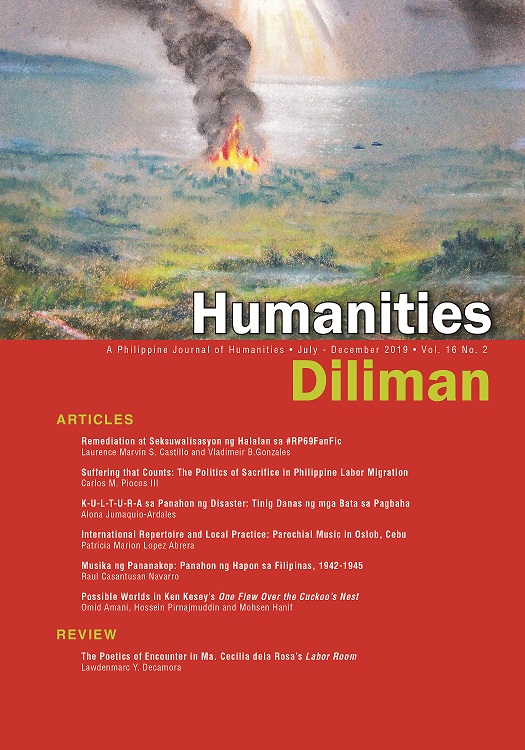K-U-L-T-U-R-A SA PANAHON NG DISASTER: Tinig-Danas ng mga Bata sa Pagbaha
Abstract
The study aims to analyze the stories of children regarding their experiences on flood in their locality. There were thirty six children who participated in sinadyang kuwentuhan, a well-planned conversation held in elementary school in their coastal community. All stories were generated and analyzed based on the mnemonic model of K-U-L-T-U-R-A (Jumaquio-Ardales 2015). This model has seven elements subdivided into three major components based on Alejo’s concept of LOOB (1990). First, the Abot-Málay (consciousness) includes their kaalaman o naiisip (knowledge or personal thoughts) in times of disaster, identifying the ugat o sanhi ng problema (root cause of the problem), and describing the lagay ng lugar (local situation); second, the Abot-Damá (disposition) covers tibok ng puso (feelings) and ugali (attitude) in the midst of disaster; and third, the Abot-Káya (engagement) focuses on their reaksiyon (initial reaction) to adapt temporarily and angking pagkilos (committed action) based on their personal values and/ or beliefs to respond to damages caused by natural and man-made calamities. In general, the K-U-L-T-U-R-A paradigm provided a holistic perspective in understanding a vulnerable sector because it describes the consciousness, disposition, and engagement of children during the prolonged flooding in their local community. The results of the study may help other stakeholders to become more culture-sensitive as they conceptualize and strategize DRRM programs both at the national and local levels.


